Search results for ""American Mathematical Society""
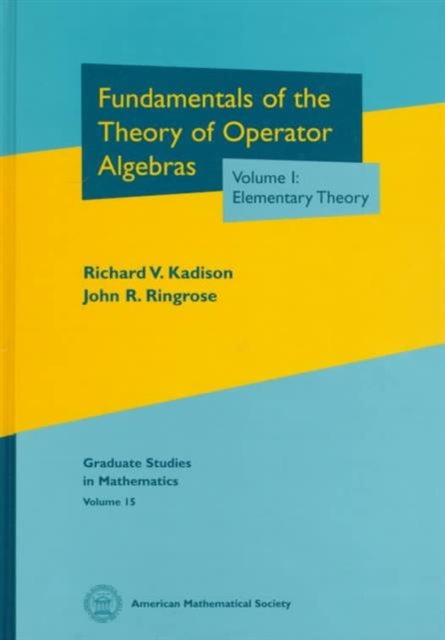
American Mathematical Society Fundamentals of the Theory of Operator Algebras, Volume I: Elementary Theory
This work and ""Fundamentals of the Theory of Operator Algebras Volume II, Advanced Theory"" present an introduction to functional analysis and the initial fundamentals of $C^*$- and von Neumann algebra theory in a form suitable for both intermediate graduate courses and self-study. The authors provide a clear account of the introductory portions of this important and technically difficult subject. Major concepts are sometimes presented from several points of view; the account is leisurely when brevity would compromise clarity. An unusual feature in a text at this level is the extent to which it is self-contained; for example, it introduces all the elementary functional analysis needed. The emphasis is on teaching. Well supplied with exercises, the text assumes only basic measure theory and topology.The book presents the possibility for the design of numerous courses aimed at different audiences. '...these two volumes represent a magnificent achievement. They will be an essential item on every operator algebraist's bookshelves and will surely become the primary source of instruction for research students in von Neumann algebra theory' - ""Bulletin of the London Mathematical Society"". 'Volumes I and II were published in 1982 and 1983. Since then they have quickly established themselves as The Textbooks in operator algebra theory'- ""Bulletin of the American Mathematical Society"". 'One of the splendid features of the original two volumes is their large supply of exercises...which illustrate the results of the text and expand its scope' - ""L'Enseignement Mathematique"".
£85.75
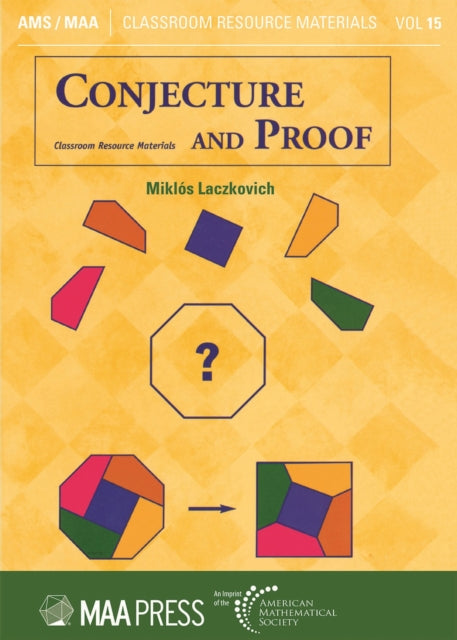
American Mathematical Society Conjecture and Proof
The Budapest semesters in mathematics were initiated with the aim of offering undergraduate courses that convey the tradition of Hungarian mathematics to English-speaking students. This book is an elaborate version of the course on Conjecture and Proof. It gives miniature introductions to various areas of mathematics by presenting some interesting and important, but easily accessible results and methods. The text contains complete proofs of deep results such as the transcendence of $e$, the Banach-Tarski paradox and the existence of Borel sets of arbitrary (finite) class. One of the purposes is to demonstrate how far one can get from the first principles in just a couple of steps. Prerequisites are kept to a minimum, and any introductory calculus course provides the necessary background for understanding the book. Exercises are included for the benefit of students. However, this book should prove fascinating for any mathematically literate reader.
£44.68
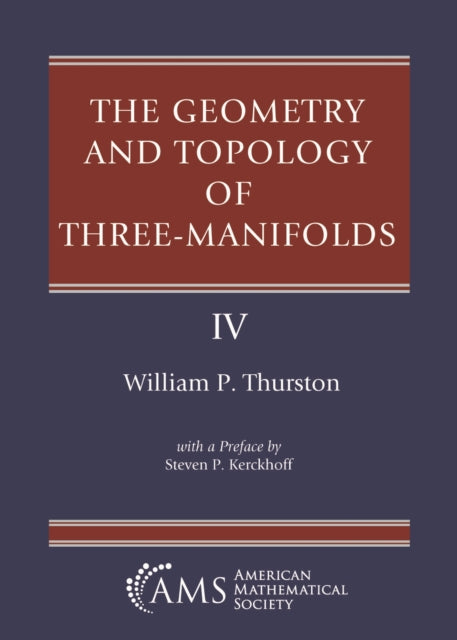
American Mathematical Society The Geometry and Topology of ThreeManifolds
This four-part collection brings together in one place William Thurston's major writings, many of which are appearing in publication for the first time. Volumes I-III contain commentaries by the Editors. Volume IV includes a preface by Steven P. Kerckhoff.
£44.68
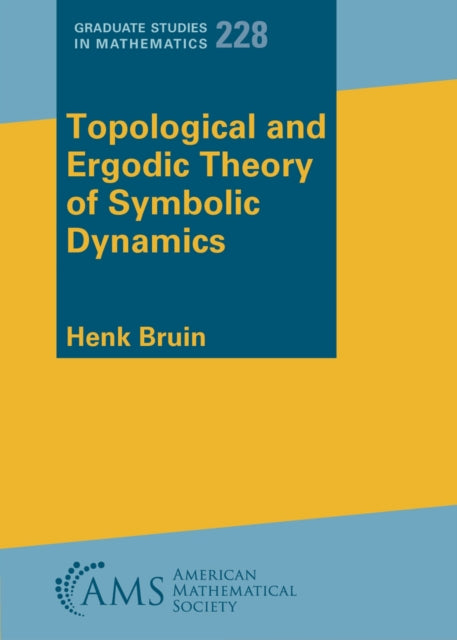
American Mathematical Society Topological and Ergodic Theory of Symbolic Dynamics
Introduces symbolic dynamics from a perspective of topological dynamical systems. After introducing symbolic and topological dynamics, the core of the book consists of discussions of subshifts of positive entropy, of zero entropy, other non-shift minimal action on the Cantor set, and the ergodic properties of these systems.
£74.14
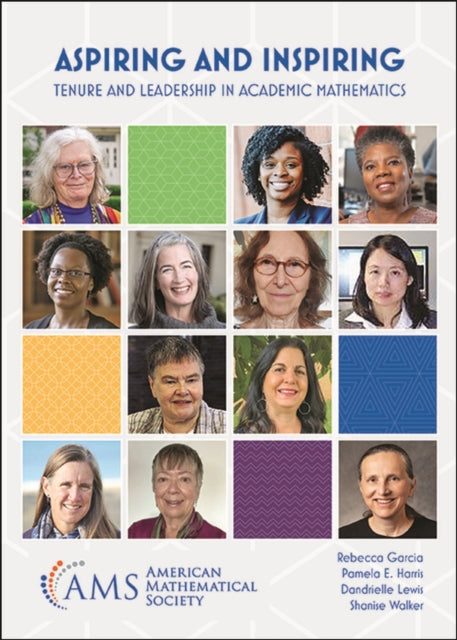
American Mathematical Society Aspiring and Inspiring
Presents a collection of essays from successful women and gender minority mathematicians on what it takes to build a career in mathematics. The individual essays are intended to advise, encourage, and inspire mathematicians throughout different stages of their careers.
£35.75
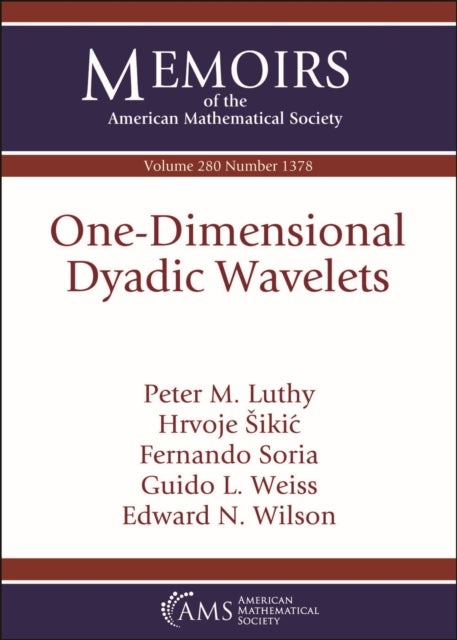
American Mathematical Society OneDimensional Dyadic Wavelets
View the abstract.
£74.14
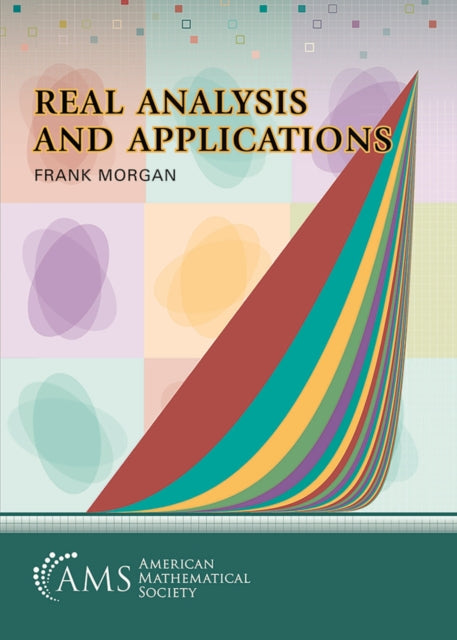
American Mathematical Society Real Analysis and Applications
Real Analysis and Applications starts with a streamlined, but complete approach to real analysis. It finishes with a wide variety of applications in Fourier series and the calculus of variations, including minimal surfaces, physics, economics, Riemannian geometry, and general relativity. The basic theory includes all the standard topics: limits of sequences, topology, compactness, the Cantor set and fractals, calculus with the Riemann integral, a chapter on the Lebesgue theory, sequences of functions, infinite series, and the exponential and Gamma functions. The applications conclude with a computation of the relativistic precession of Mercury's orbit, which Einstein called convincing proof of the correctness of the theory [of General Relativity].The text not only provides clear, logical proofs, but also shows the student how to come up with them. The excellent exercises come with select solutions in the back. Here is a text which makes it possible to do the full theory and significant
£49.14
American Mathematical Society The History of Mathematics A SourceBased Approach Volume 2
Provides a comprehensive history of the development of mathematics. This second volume of a two-volume set, takes the reader from the invention of the calculus to the beginning of the twentieth century.
£76.83
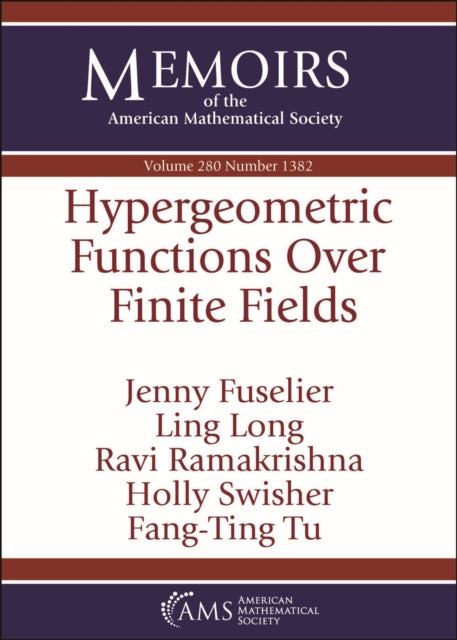
American Mathematical Society Hypergeometric Functions Over Finite Fields
View the abstract.
£74.14
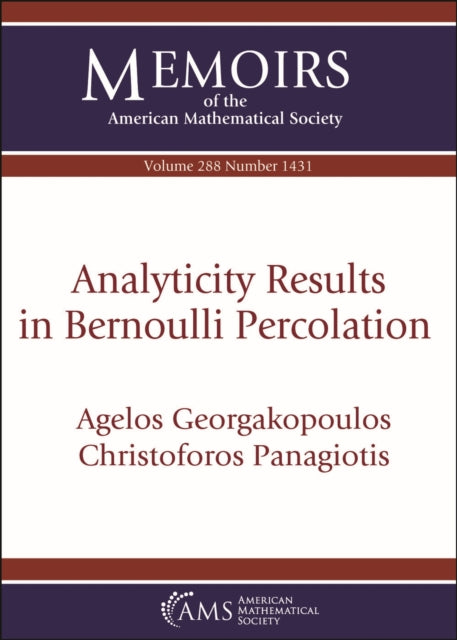
American Mathematical Society Analyticity Results in Bernoulli Percolation
£74.14
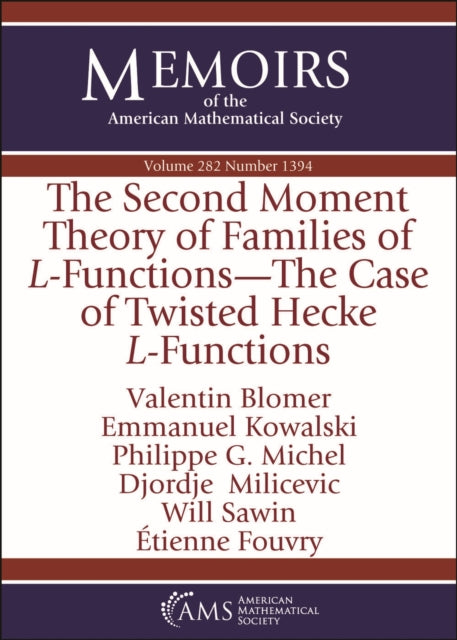
American Mathematical Society The Second Moment Theory of Families of LFunctionsThe Case of Twisted Hecke LFunctions
View the abstract.
£71.46
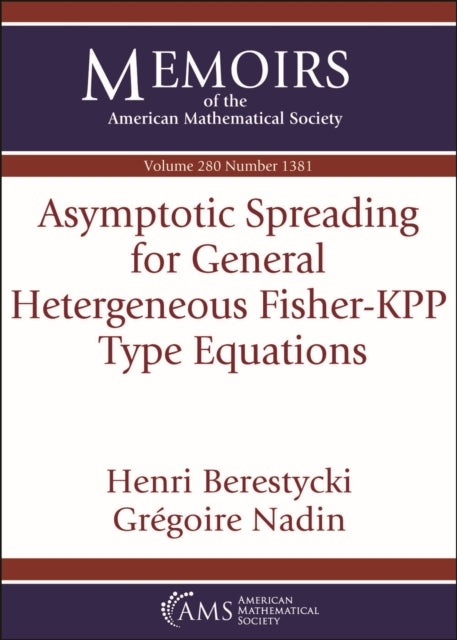
American Mathematical Society Asymptotic Spreading for General Heterogeneous FisherKPP Type Equations
View the abstract.
£74.14
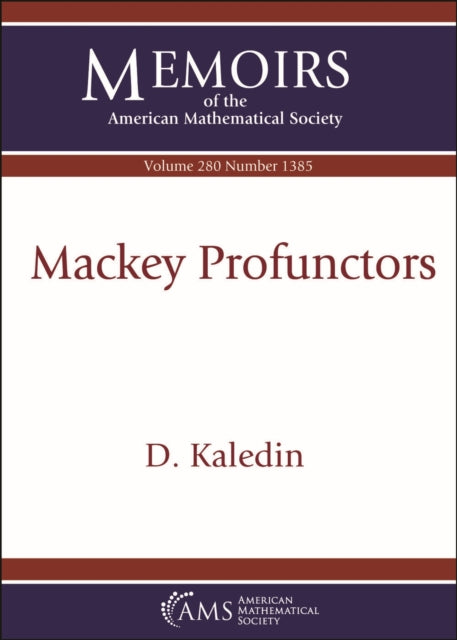
American Mathematical Society Mackey Profunctors
View the abstract.
£74.14
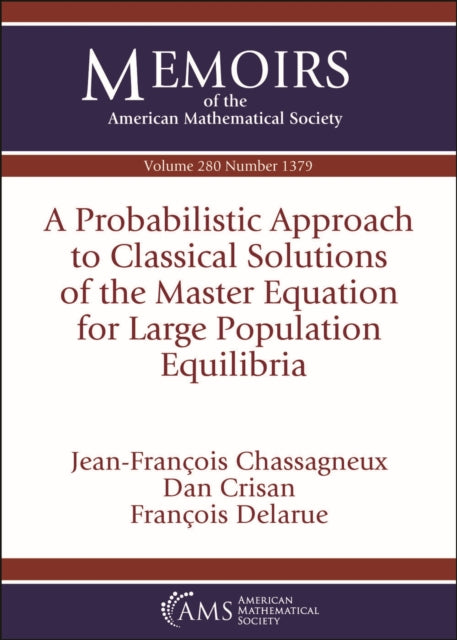
American Mathematical Society A Probabilistic Approach to Classical Solutions of the Master Equation for Large Population Equilibria
View the abstract.
£74.14
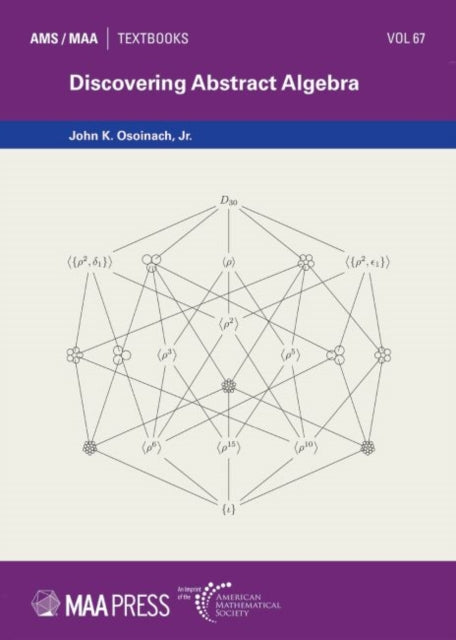
American Mathematical Society Discovering Abstract Algebra
Discovering Abstract Algebra takes an Inquiry-Based Learning approach to the subject, leading students to discover for themselves its main themes and techniques. Concepts are introduced conversationally through extensive examples and student investigation before being formally defined. Students will develop skills in carefully making statements and writing proofs, while they simultaneously build a sense of ownership over the ideas and results. The book has been extensively tested and reinforced at points of common student misunderstanding or confusion, and includes a wealth of exercises at a variety of levels. The contents were deliberately organized to follow the recommendations of the MAA's 2015 Curriculum Guide. The book is ideal for a one- or two-semester course in abstract algebra, and will prepare students well for graduate-level study in algebra.
£60.75
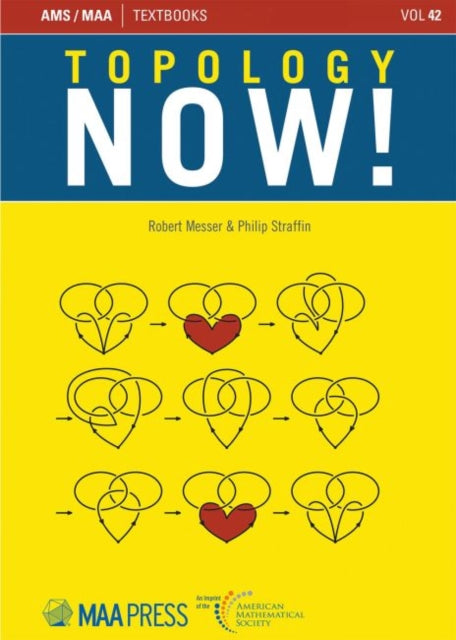
American Mathematical Society Topology Now!
Topology is a branch of mathematics packed with intriguing concepts, fascinating geometrical objects, and ingenious methods for studying them. The authors have written this textbook to make the material accessible to undergraduate students without requiring extensive prerequisites in upper-level mathematics. The approach is to cultivate the intuitive ideas of continuity, convergence, and connectedness so students can quickly delve into knot theory, the topology of surfaces and three-dimensional manifolds, fixed points and elementary homotopy theory. The fundamental concepts of point-set topology appear at the end of the book when students can see how this level of abstraction provides a sound logical basis for the geometrical ideas that have come before. This organization exposes students to the exciting world of topology now(!) rather than later. Students using this textbook should have some exposure to the geometry of objects in higher-dimensional Euclidean spaces together with an appreciation of precise mathematical definitions and proofs.
£76.53
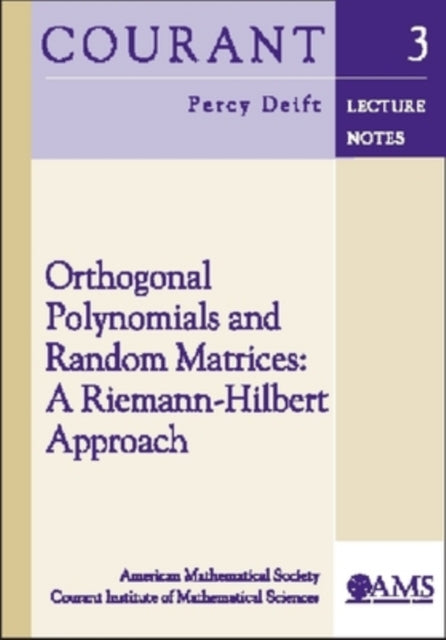
American Mathematical Society Orthogonal Polynomials and Random Matrices: A Riemann-Hilbert Approach
This volume expands on a set of lectures held at the Courant Institute on Riemann-Hilbert problems, orthogonal polynomials, and random matrix theory. The goal of the course was to prove universality for a variety of statistical quantities arising in the theory of random matrix models. The central question was the following: Why do very general ensembles of random $n {\times} n$ matrices exhibit universal behavior as $n {\rightarrow} {\infty}$? The main ingredient in the proof is the steepest descent method for oscillatory Riemann-Hilbert problems.
£36.64
American Mathematical Society An Excursion Through Discrete Differential Geometry
Discrete Differential Geometry (DDG) is an emerging discipline at the boundary between mathematics and computer science. It aims to translate concepts from classical differential geometry into a language that is purely finite and discrete, and can hence be used by algorithms to reason about geometric data. In contrast to standard numerical approximation, the central philosophy of DDG is to faithfully and exactly preserve key invariants of geometric objects at the discrete level. This process of translation from smooth to discrete helps to both illuminate the fundamental meaning behind geometric ideas and provide useful algorithmic guarantees. This volume is based on lectures delivered at the 2018 AMS Short Course ``Discrete Differential Geometry,'' held January 8-9, 2018, in San Diego, California. The papers in this volume illustrate the principles of DDG via several recent topics: discrete nets, discrete differential operators, discrete mappings, discrete conformal geometry, and discrete optimal transport.
£100.93
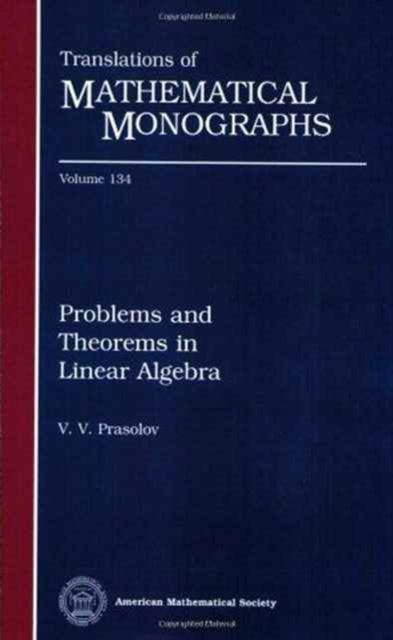
American Mathematical Society Problems and Theorems in Linear Algebra
There are a number of very good books available on linear algebra. From this one might deduce that the existing books contain all that one needs to know in the best possible form and that any new book would just repeat material in the old ones. However, new results in linear algebra appear constantly, as do new, simpler, and better proofs of old results. Many linear algebra results obtained in the past thirty years are accessible to undergraduate mathematics majors, but are usually ignored by textbooks. In addition, more than a few interesting old results are not covered in many books. In this book, Prasolov provides the basics of linear algebra, with an emphasis on new results and on nonstandard and interesting proofs. The book features about 230 problems with complete solutions. It would be a fine supplementary text for an undergraduate or graduate algebra course.
£139.33
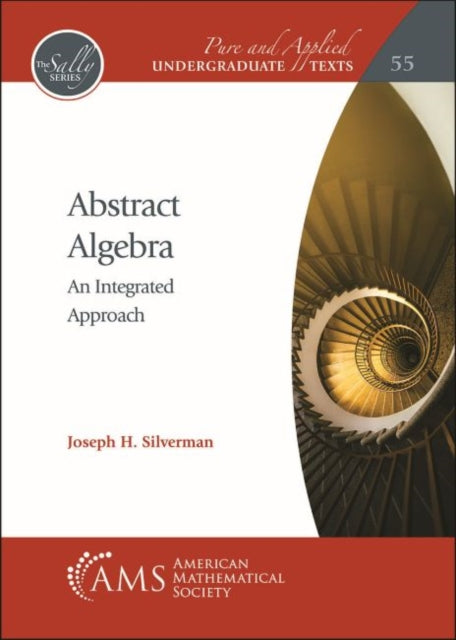
American Mathematical Society Abstract Algebra: An Integrated Approach
This abstract algebra textbook takes an integrated approach that highlights the similarities of fundamental algebraic structures among a number of topics. The book begins by introducing groups, rings, vector spaces, and fields, emphasizing examples, definitions, homomorphisms, and proofs. The goal is to explain how all of the constructions fit into an axiomatic framework and to emphasize the importance of studying those maps that preserve the underlying algebraic structure. This fast-paced introduction is followed by chapters in which each of the four main topics is revisited and deeper results are proven. The second half of the book contains material of a more advanced nature. It includes a thorough development of Galois theory, a chapter on modules, and short surveys of additional algebraic topics designed to whet the reader's appetite for further study. This book is intended for a first introduction to abstract algebra and requires only a course in linear algebra as a prerequisite. The more advanced material could be used in an introductory graduate-level course.
£46.26
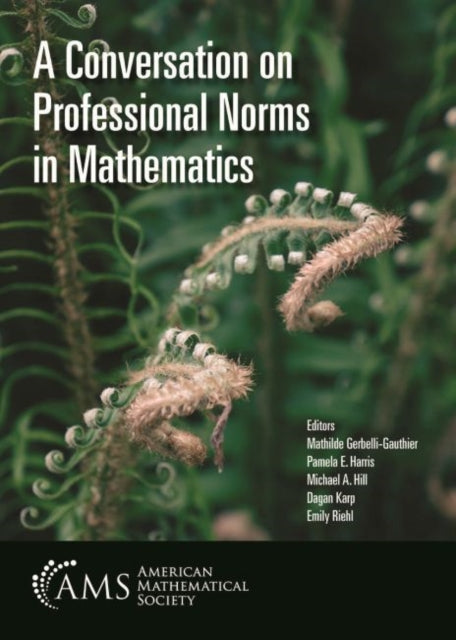
American Mathematical Society A Conversation on Professional Norms in Mathematics
The articles in this volume grew out of a 2019 workshop, held at Johns Hopkins University, that was inspired by a belief that when mathematicians take time to reflect on the social forces involved in the production of mathematics, actionable insights result. Topics range from mechanisms that lead to an inclusion-exclusion dichotomy within mathematics to common pitfalls and better alternatives to how mathematicians approach teaching, mentoring and communicating mathematical ideas.This collection will be of interest to students, faculty and administrators wishing to gain a snapshot of the current state of professional norms within mathematics and possible steps toward improvements.
£53.60
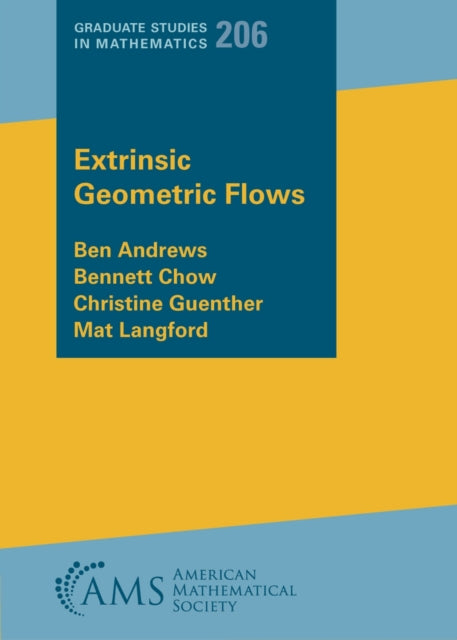
American Mathematical Society Extrinsic Geometric Flows
Extrinsic geometric flows are characterized by a submanifold evolving in an ambient space with velocity determined by its extrinsic curvature. The goal of this book is to give an extensive introduction to a few of the most prominent extrinsic flows, namely, the curve shortening flow, the mean curvature flow, the Gauss curvature flow, the inverse-mean curvature flow, and fully nonlinear flows of mean curvature and inverse-mean curvature type. The authors highlight techniques and behaviors that frequently arise in the study of these (and other) flows. To illustrate the broad applicability of the techniques developed, they also consider general classes of fully nonlinear curvature flows. The book is written at the level of a graduate student who has had a basic course in differential geometry and has some familiarity with partial differential equations. It is intended also to be useful as a reference for specialists. In general, the authors provide detailed proofs, although for some more specialized results they may only present the main ideas; in such cases, they provide references for complete proofs. A brief survey of additional topics, with extensive references, can be found in the notes and commentary at the end of each chapter.
£84.85
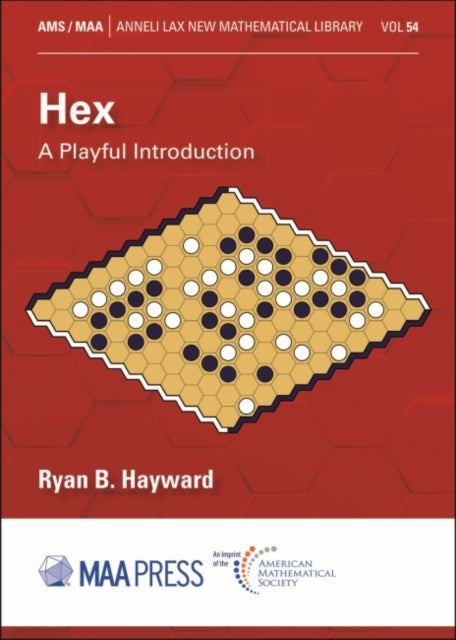
American Mathematical Society Hex: A Playful Introduction
This book offers a gentle introduction to Hex, the classic board game created by Piet Hein and popularized by John Nash and Martin Gardner. The first three chapters cover rules, basic strategy, and history. The remaining eight chapters cover a variety of topics: mathematical properties (there are no draws, the first player can win, the acute corner is a losing first move), the related game of Y, winning strategies for small boards, how computers play Hex, an analysis of Random-Move Hex (where one or both players move randomly) and Dark Hex (the imperfect information version of the game, where you can't see your opponent's moves). Did we mention puzzles? There are puzzles in every chapter, with solutions.This book is intended for anyone interested in playing board games or learning some recreational mathematics. It is written for a wide audience and will be enjoyed equally by general readers and professional mathematicians. The book could be used as a textbook or companion resource for a topics course on recreational mathematics or game theory or as a source for undergraduate research questions.
£33.08
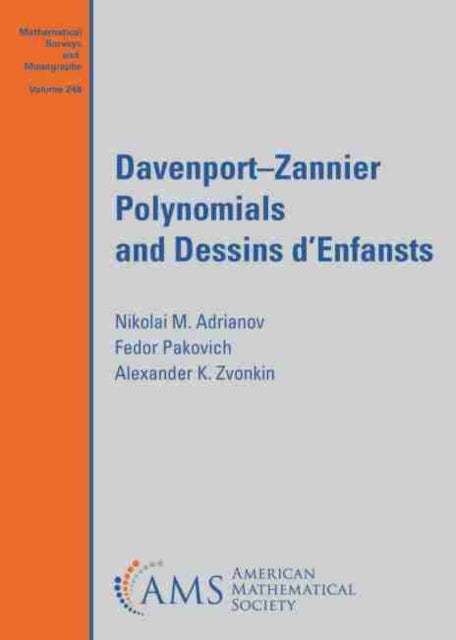
American Mathematical Society Davenport-Zannier Polynomials and Dessins d'Enfants
The French expression "dessins d'enfants'' means children's drawings. This term was coined by the great French mathematician Alexandre Grothendieck in order to denominate a method of pictorial representation of some highly interesting classes of polynomials and rational functions. The polynomials studied in this book take their origin in number theory. The authors show how, by drawing simple pictures, one can prove some long-standing conjectures and formulate new ones. The theory presented here touches upon many different fields of mathematics.The major part of the book is quite elementary and is easily accessible to an undergraduate student. The less elementary parts, such as Galois theory or group representations and their characters, would need a more profound knowledge of mathematics. The reader may either take the basic facts of these theories for granted or use our book as a motivation and a first approach to these subjects.
£118.79
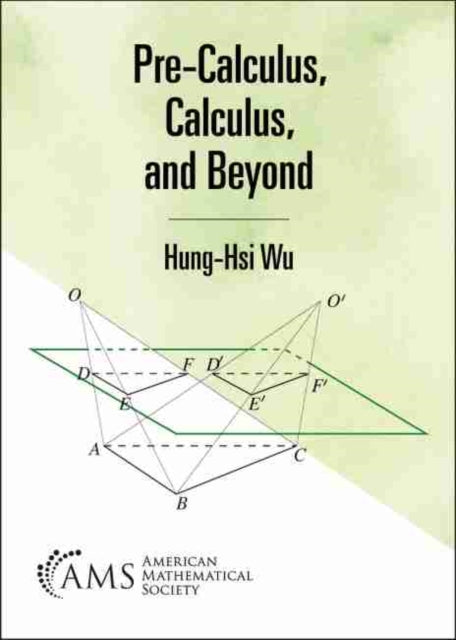
American Mathematical Society Pre-Calculus, Calculus, and Beyond
This is the last of three volumes that, together, give an exposition of the mathematics of grades 9–12 that is simultaneously mathematically correct and grade-level appropriate. The volumes are consistent with CCSSM (Common Core State Standards for Mathematics) and aim at presenting the mathematics of K–12 as a totally transparent subject.This volume distinguishes itself from others of the same genre in getting the mathematics right. In trigonometry, this volume makes explicit the fact that the trigonometric functions cannot even be defined without the theory of similar triangles. It also provides details for extending the domain of definition of sine and cosine to all real numbers. It explains as well why radians should be used for angle measurements and gives a proof of the conversion formulas between degrees and radians.In calculus, this volume pares the technicalities concerning limits down to the essential minimum to make the proofs of basic facts about differentiation and integration both correct and accessible to school teachers and educators; the exposition may also benefit beginning math majors who are learning to write proofs. An added bonus is a correct proof that one can get a repeating decimal equal to a given fraction by the “long division” of the numerator by the denominator. This proof attends to all three things all at once: what an infinite decimal is, why it is equal to the fraction, and how long division enters the picture.This book should be useful for current and future teachers of K–12 mathematics, as well as for some high school students and for education professionals.
£44.68
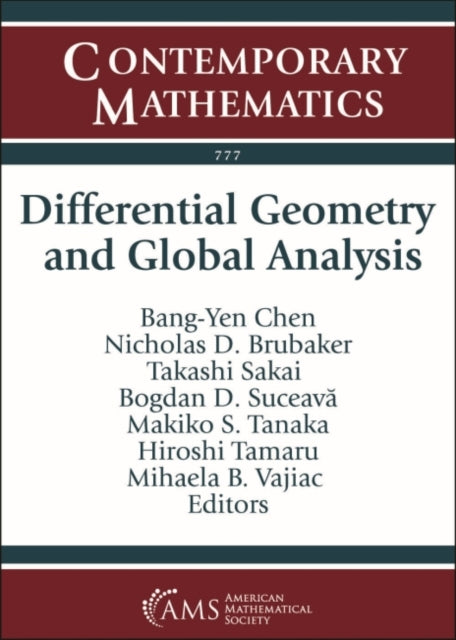
American Mathematical Society Differential Geometry and Global Analysis: In Honor of Tadashi Nagano
This volume contains the proceedings of the AMS Special Session on Differential Geometry and Global Analysis, Honoring the Memory of Tadashi Nagano (1930-2017), held January 16, 2020, in Denver, Colorado. Tadashi Nagano was one of the great Japanese differential geometers, whose fundamental and seminal work still attracts much interest today.This volume is inspired by his work and his legacy and, while reminding historical results obtained in the past, presents recent developments in the geometry of symmetric spaces as well as generalizations of symmetric spaces; minimal surfaces and minimal submanifolds; totally geodesic submanifolds and their classification; Riemannian, affine, projective, and conformal connections; the $(M_{+}, M_{-})$ method and its applications; and maximal antipodal subsets. Additionally, the volume features recent achievements related to biharmonic and biconservative hypersurfaces in space forms, the geometry of Laplace operator on Riemannian manifolds, and Chen-Ricci inequalities for Riemannian maps, among other topics that could attract the interest of any scholar working in differential geometry and global analysis on manifolds.
£106.29
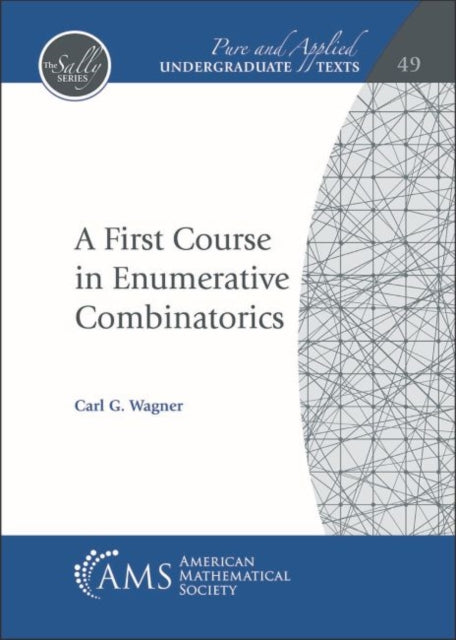
American Mathematical Society A First Course in Enumerative Combinatorics
First Course in Enumerative Combinatorics provides an introduction to the fundamentals of enumeration for advanced undergraduates and beginning graduate students in the mathematical sciences. The book offers a careful and comprehensive account of the standard tools of enumeration—recursion, generating functions, sieve and inversion formulas, enumeration under group actions—and their application to counting problems for the fundamental structures of discrete mathematics, including sets and multisets, words and permutations, partitions of sets and integers, and graphs and trees. The author’s exposition has been strongly influenced by the work of Rota and Stanley, highlighting bijective proofs, partially ordered sets, and an emphasis on organizing the subject under various unifying themes, including the theory of incidence algebras. In addition, there are distinctive chapters on the combinatorics of finite vector spaces, a detailed account of formal power series, and combinatorial number theory.The reader is assumed to have a knowledge of basic linear algebra and some familiarity with power series. There are over 200 well-designed exercises ranging in difficulty from straightforward to challenging. There are also sixteen large-scale honors projects on special topics appearing throughout the text. The author is a distinguished combinatorialist and award-winning teacher, and he is currently Professor Emeritus of Mathematics and Adjunct Professor of Philosophy at the University of Tennessee. He has published widely in number theory, combinatorics, probability, decision theory, and formal epistemology. His Erdo?s number is 2. An instructor’s manual for this title is available electronically to those instructors who have adopted the textbook for classroom use. Please send email to textbooks@ams.org for more information.
£90.43
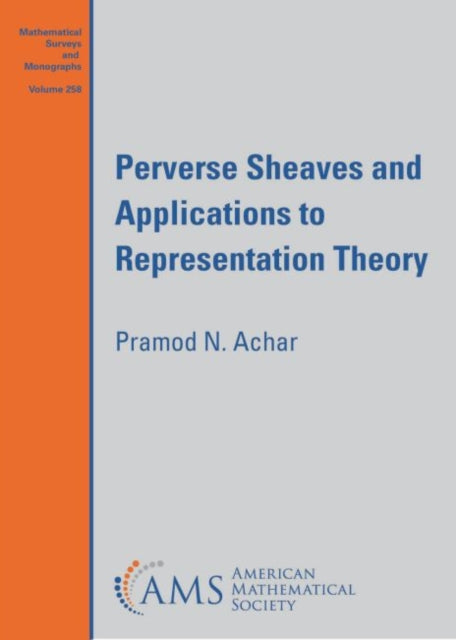
American Mathematical Society Perverse Sheaves and Applications to Representation Theory
Since its inception around 1980, the theory of perverse sheaves has been a vital tool of fundamental importance in geometric representation theory. This book, which aims to make this theory accessible to students and researchers, is divided into two parts. The first six chapters give a comprehensive account of constructible and perverse sheaves on complex algebraic varieties, including such topics as Artin's vanishing theorem, smooth descent, and the nearby cycles functor. This part of the book also has a chapter on the equivariant derived category, and brief surveys of side topics including etale and $\ell$-adic sheaves, $\mathcal{D}$-modules, and algebraic stacks.The last four chapters of the book show how to put this machinery to work in the context of selected topics in geometric representation theory: Kazhdan-Lusztig theory; Springer theory; the geometric Satake equivalence; and canonical bases for quantum groups. Recent developments such as the $p$-canonical basis are also discussed.The book has more than 250 exercises, many of which focus on explicit calculations with concrete examples. It also features a 4-page ``Quick Reference'' that summarizes the most commonly used facts for computations, similar to a table of integrals in a calculus textbook.
£106.29
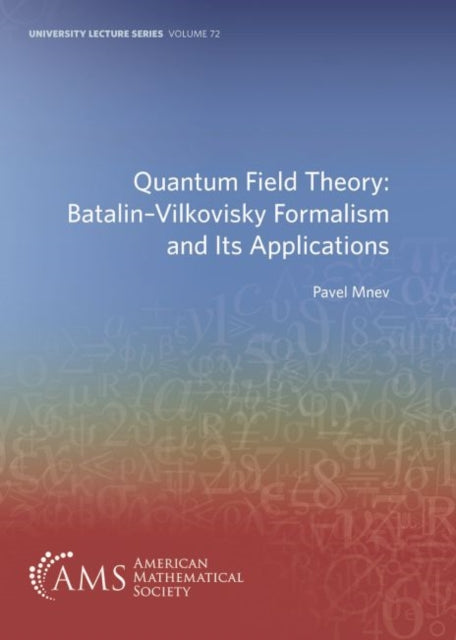
American Mathematical Society Quantum Field Theory: Batalin-Vilkovisky Formalism and Its Applications
This book originated from lecture notes for the course given by the author at the University of Notre Dame in the fall of 2016. The aim of the book is to give an introduction to the perturbative path integral for gauge theories (in particular, topological field theories) in Batalin-Vilkovisky formalism and to some of its applications. The book is oriented toward a graduate mathematical audience and does not require any prior physics background. To elucidate the picture, the exposition is mostly focused on finite-dimensional models for gauge systems and path integrals, while giving comments on what has to be amended in the infinite-dimensional case relevant to local field theory. Motivating examples discussed in the book include Alexandrov-Kontsevich-Schwarz-Zaboronsky sigma models, the perturbative expansion for Chern-Simons invariants of 3-manifolds given in terms of integrals over configurations of points on the manifold, the BF (background field) theory on cellular decompositions of manifolds, and Kontsevich's deformation quantization formula.
£60.75
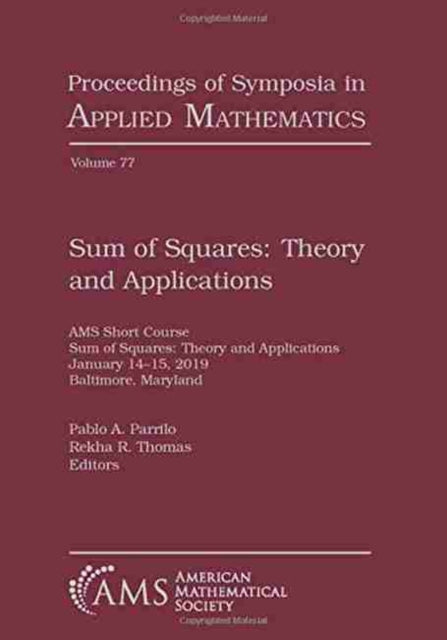
American Mathematical Society Sum of Squares: Theory and Applications
This volume is based on lectures delivered at the 2019 AMS Short Course ""Sum of Squares: Theory and Applications'', held January 14-15, 2019, in Baltimore, Maryland. This book provides a concise state-of-the-art overview of the theory and applications of polynomials that are sums of squares. This is an exciting and timely topic, with rich connections to many areas of mathematics, including polynomial and semidefinite optimization, real and convex algebraic geometry, and theoretical computer science.The six chapters introduce and survey recent developments in this area; specific topics include the algebraic and geometric aspects of sums of squares and spectrahedra, lifted representations of convex sets, and the algorithmic and computational implications of viewing sums of squares as a meta algorithm. The book also showcases practical applications of the techniques across a variety of areas, including control theory, statistics, finance and machine learning.
£100.93
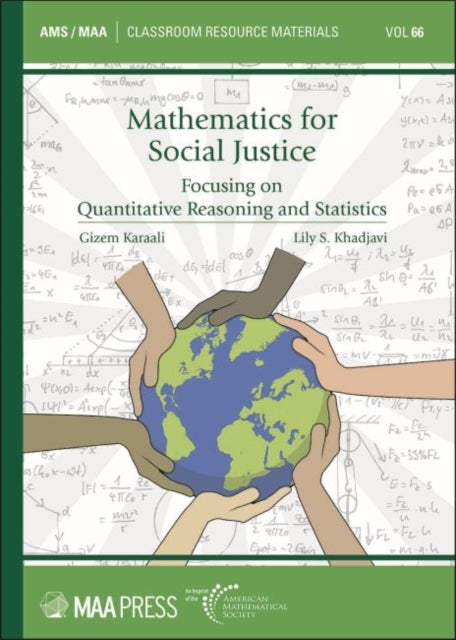
American Mathematical Society Mathematics for Social Justice: Focusing on Quantitative Reasoning and Statistics
Mathematics for Social Justice: Focusing on Quantitative Reasoning and Statistics offers a collection of resources for mathematics faculty interested in incorporating questions of social justice into their classrooms. The book comprises seventeen classroom-tested modules featuring ready-to-use activities and investigations for college mathematics and statistics courses. The modules empower students to study issues of social justice and to see the power and limitations of mathematics in real-world contexts of deep concern. The primary focus is on classroom activities where students can ask their own questions, find and analyze real data, apply mathematical ideas themselves, and draw their own conclusions. Module topics in the book focus on technical content that could support courses in quantitative reasoning or introductory statistics. Social themes include electoral issues, environmental justice, equity/inequity, human rights, and racial justice, including topics such as gentrification, partisan gerrymandering, policing, and more.The volume editors are leaders of the national movement to include social justice material in mathematics teaching and jointly edited the earlier AMS-MAA volume, Mathematics for Social Justice: Resources for the College Classroom.
£53.60
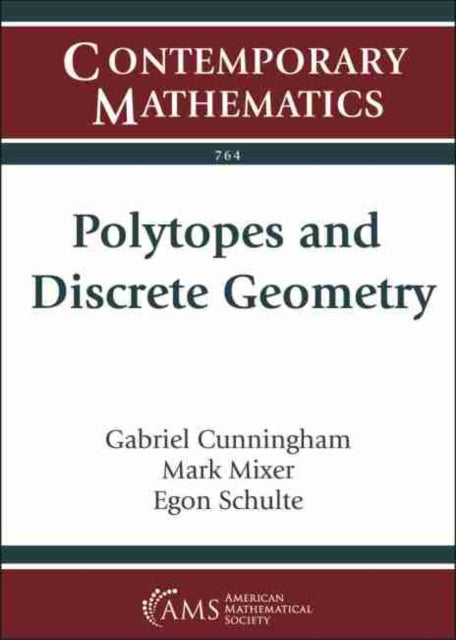
American Mathematical Society Polytopes and Discrete Geometry
This volume contains the proceedings of the AMS Special Session on Polytopes and Discrete Geometry, held from April 21-22, 2018, at Northeastern University, Boston, Massachusetts. The papers showcase the breadth of discrete geometry through many new methods and results in a variety of topics. Also included are survey articles on some important areas of active research. This volume is aimed at researchers in discrete and convex geometry and researchers who work with abstract polytopes or string $C$-groups. It is also aimed at early career mathematicians, including graduate students and postdoctoral fellows, to give them a glimpse of the variety and beauty of these research areas. Topics covered in this volume include: the combinatorics, geometry, and symmetries of convex polytopes; tilings; discrete point sets; the combinatorics of Eulerian posets and interval posets; symmetries of surfaces and maps on surfaces; self-dual polytopes; string $C$-groups; hypertopes; and graph coloring.
£104.50
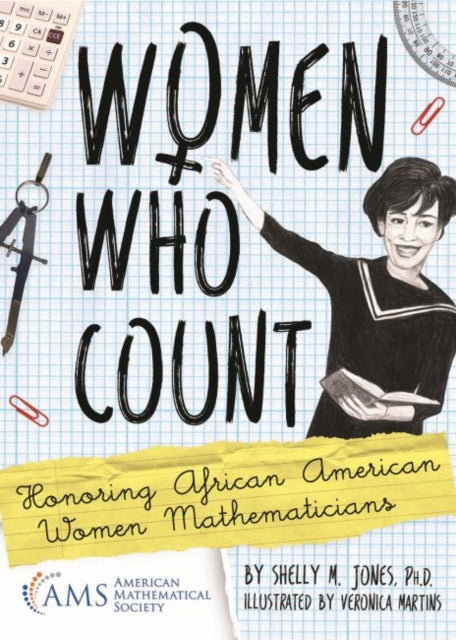
American Mathematical Society Women Who Count: Honoring African American Women Mathematicians
Women Who Count: Honoring African American Women Mathematicians is a children's activity book highlighting the lives and work of 29 African American women mathematicians, including Dr. Christine Darden, Mary Jackson, Katherine Johnson, and Dorothy Vaughan from the award-winning book and movie Hidden Figures. It is a must-read for parents and children alike.
£17.88
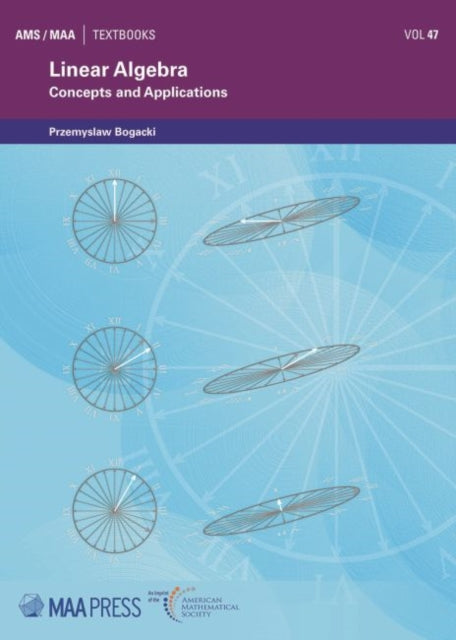
American Mathematical Society Linear Algebra: Concepts and Applications
Linear Algebra: Concepts and Applications is designed to be used in a first linear algebra course taken by mathematics and science majors. It provides a complete coverage of core linear algebra topics, including vectors and matrices, systems of linear equations, general vector spaces, linear transformations, eigenvalues, and eigenvectors. All results are carefully, clearly, and rigorously proven. The exposition is very accessible.The applications of linear algebra are extensive and substantial-several of those recur throughout the text in different contexts, including many that elucidate concepts from multivariable calculus. Unusual features of the text include a pervasive emphasis on the geometric interpretation and viewpoint as well as a very complete treatment of the singular value decomposition. The book includes over 800 exercises and numerous references to the author's custom software Linear Algebra Toolkit.
£87.34
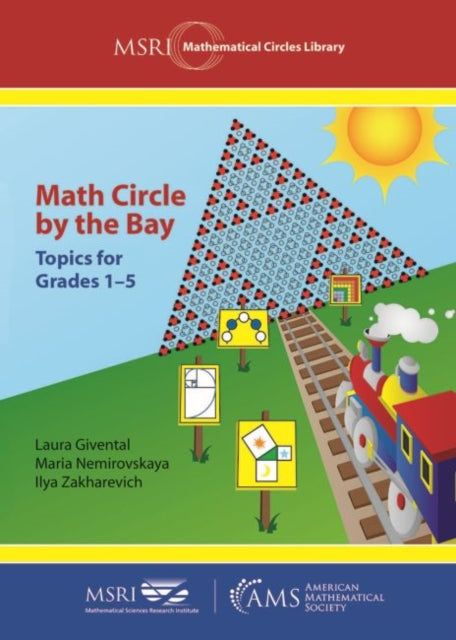
American Mathematical Society Math Circle by the Bay: Topics for Grades 1-5
This book is based on selected topics that the authors taught in math circles for elementary school students at the University of California, Berkeley; Stanford University; Dominican University (Marin County, CA); and the University of Oregon (Eugene). It is intended for people who are already running a math circle or who are thinking about organizing one. It can be used by parents to help their motivated, math-loving kids or by elementary school teachers. We also hope that bright 4th- or 5th-graders will be able to read this book on their own.The main features of this book are the logical sequence of the problems, the description of class reactions, and the hints given for when the kids get stuck. This book tries to keep the balance between two goals: inspire readers to invent their own original approaches while being detailed enough to work as a fallback in case the teacher needs to prepare a lesson on short notice. Kids will be introduced to combinatorics, Fibonacci numbers, Pascal's triangle, and the notion of area, among other things. The authors chose topics with deep mathematical context that are part of the continuously developing stream of mathematical thought. These topics are just as engaging and entertaining to children as typical ``recreational math'' problems, but they can be developed deeper and to more advanced levels.In the interest of fostering a greater awareness and appreciation of mathematics and its connections to other disciplines and everyday life, MSRI and the AMS are publishing books in the Mathematical Circles Library series as a service to young people, their parents and teachers, and the mathematics profession.
£33.08
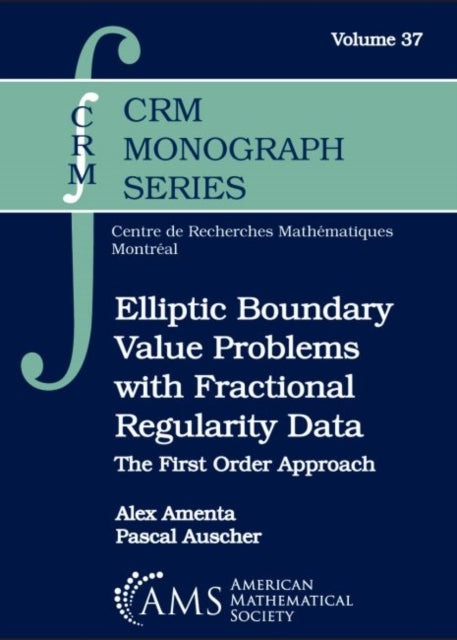
American Mathematical Society Elliptic Boundary Value Problems with Fractional Regularity Data: The First Order Approach
In this monograph the authors study the well-posedness of boundary value problems of Dirichlet and Neumann type for elliptic systems on the upper half-space with coefficients independent of the transversal variable and with boundary data in fractional Hardy-Sobolev and Besov spaces. The authors use the so-called ``first order approach'' which uses minimal assumptions on the coefficients and thus allows for complex coefficients and for systems of equations.This self-contained exposition of the first order approach offers new results with detailed proofs in a clear and accessible way and will become a valuable reference for graduate students and researchers working in partial differential equations and harmonic analysis.
£110.75
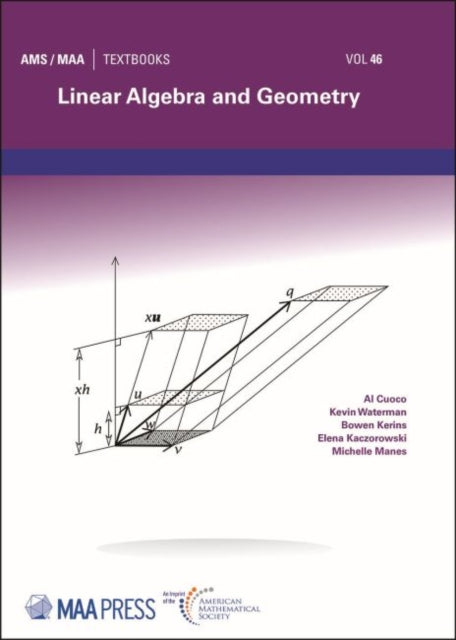
American Mathematical Society Linear Algebra and Geometry
Linear Algebra and Geometry is organized around carefully sequenced problems that help students build both the tools and the habits that provide a solid basis for further study in mathematics. Requiring only high school algebra, it uses elementary geometry to build the beautiful edifice of results and methods that make linear algebra such an important field. The materials in Linear Algebra and Geometry have been used, field tested, and refined for over two decades. It is aimed at preservice and practicing high school mathematics teachers and advanced high school students looking for an addition to or replacement for calculus. Secondary teachers will find the emphasis on developing effective habits of mind especially helpful. The book is written in a friendly, approachable voice and contains nearly a thousand problems.
£87.34
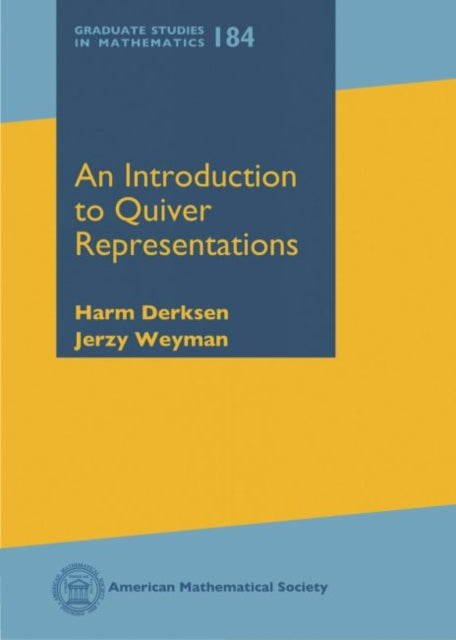
American Mathematical Society An Introduction to Quiver Representations
This book is an introduction to the representation theory of quivers and finite dimensional algebras. It gives a thorough and modern treatment of the algebraic approach based on Auslander-Reiten theory as well as the approach based on geometric invariant theory. The material in the opening chapters is developed starting slowly with topics such as homological algebra, Morita equivalence, and Gabriel's theorem. Next, the book presents Auslander-Reiten theory, including almost split sequences and the Auslander-Reiten transform, and gives a proof of Kac's generalization of Gabriel's theorem. Once this basic material is established, the book goes on with developing the geometric invariant theory of quiver representations. The book features the exposition of the saturation theorem for semi-invariants of quiver representations and its application to Littlewood-Richardson coefficients. In the final chapters, the book exposes tilting modules, exceptional sequences and a connection to cluster categories.The book is suitable for a graduate course in quiver representations and has numerous exercises and examples throughout the text. The book will also be of use to experts in such areas as representation theory, invariant theory and algebraic geometry, who want learn about application of quiver representations to their fields.
£115.21
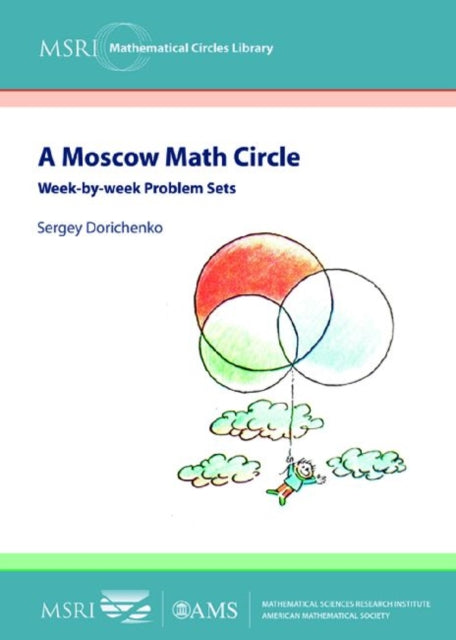
American Mathematical Society A Moscow Math Circle: Week-by-week Problem Sets
Moscow has a rich tradition of successful math circles, to the extent that many other circles are modeled on them. This book presents materials used during the course of one year in a math circle organized by mathematics faculty at Moscow State University, and also used at the mathematics magnet school known as Moscow School Number 57. Each problem set has a similar structure: it combines review material with a new topic, offering problems in a range of difficulty levels. This time-tested pattern has proved its effectiveness in engaging all students and helping them master new material while building on earlier knowledge. The introduction describes in detail how the math circles at Moscow State University are run. Dorichenko describes how the early sessions differ from later sessions, how to choose problems, and what sorts of difficulties may arise when running a circle. The book also includes a selection of problems used in the competition known as the Mathematical Maze, a mathematical story based on actual lessons with students, and an addendum on the San Jose Mathematical Circle, which is run in the Russian style. In the interest of fostering a greater awareness and appreciation of mathematics and its connections to other disciplines and everyday life, MSRI and the AMS are publishing books in the Mathematical Circles Library series as a service to young people, their parents and teachers, and the mathematics profession.
£33.08
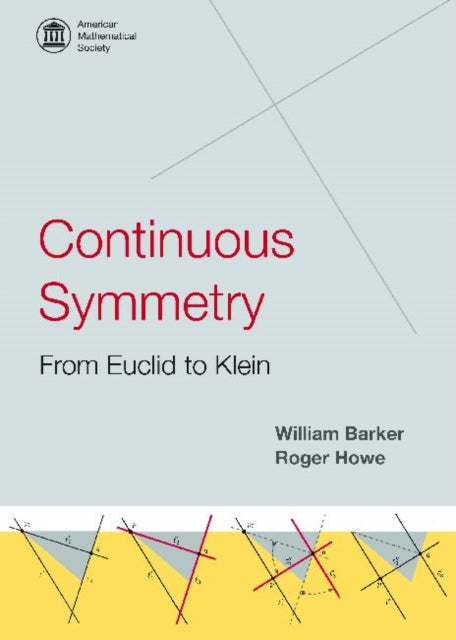
American Mathematical Society Continuous Symmetry: from Euclid to Klein: from Euclid to Klein
The fundamental idea of geometry is that of symmetry. With that principle as the starting point, Barker and Howe begin an insightful and rewarding study of Euclidean geometry. The primary focus of the book is on transformations of the plane. The transformational point of view provides both a path for deeper understanding of traditional synthetic geometry and tools for providing proofs that spring from a consistent point of view. As a result, proofs become more comprehensible, as techniques can be used and reused in similar settings. The approach to the material is very concrete, with complete explanations of all the important ideas, including foundational background. The discussions of the nine-point circle and wallpaper groups are particular examples of how the strength of the transformational point of view and the care of the authors' exposition combine to give a remarkable presentation of topics in geometry. This text is for a one-semester undergraduate course on geometry. It is richly illustrated and contains hundreds of exercises.
£75.73
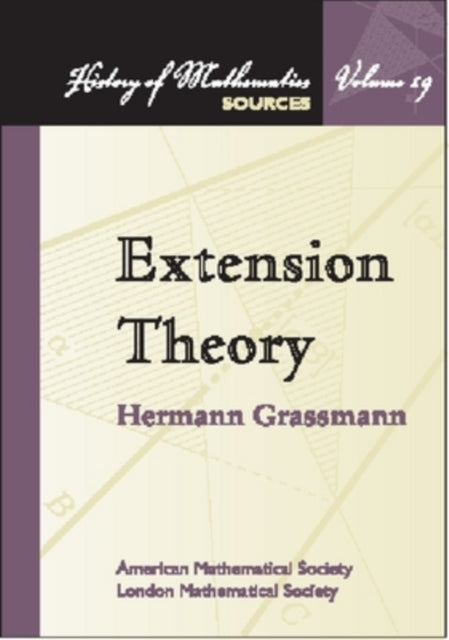
American Mathematical Society Extension Theory
The Ausdehnungslehre of 1862 is Grassmann's most mature presentation of his 'extension theory'. The work was unique in capturing the full sweep of his mathematical achievements. Compared to Grassmann's first book, ""Lineale Ausdehnungslehre"", this book contains an enormous amount of new material, including a detailed development of the inner product and its relation to the concept of angle, the 'theory of functions' from the point of view of extension theory, and Grassmann's contribution to the Pfaff problem.In many ways, this book is the version of Grassmann's system most accessible to contemporary readers. This translation is based on the material in Grassmann's ""Gesammelte Werke"", published by B.G. Teubner (Stuttgart and Leipzig, Germany). It includes nearly all the Editorial Notes from that edition, but the 'improved' proofs are relocated, and Grassmann's original proofs are restored to their proper places. The original Editorial Notes are augmented by Supplementary Notes, elucidating Grassmann's achievement in modern terms. This volume is one of an informal sequence of works within the ""History of Mathematics"" series. Volumes in this subset, 'Sources', are classical mathematical works that served as cornerstones for modern mathematical thought.
£106.29

American Mathematical Society Selected Works of Ellis Kolchin with Commentary
The work of Joseph Fels Ritt and Ellis Kolchin in differential algebra paved the way for exciting new applications in constructive symbolic computation, differential Galois theory, the model theory of fields, and Diophantine geometry. This volume assembles Kolchin's mathematical papers, contributing solidly to the archive on construction of modern differential algebra. This collection of Kolchin's clear and comprehensive papers - in themselves constituting a history of the subject - is an invaluable aid to the student of differential algebra. In 1910, Ritt created a theory of algebraic differential equations modeled not on the existing transcendental methods of Lie, but rather on the new algebra being developed by E. Noether and B. van der Waerden.Building on Ritt's foundation, and deeply influenced by Weil and Chevalley, Kolchin opened up Ritt theory to modern algebraic geometry. In so doing, he led differential geometry in a new direction. By creating differential algebraic geometry and the theory of differential algebraic groups, Kolchin provided the foundation for a 'new geometry' that has led to both a striking and an original approach to arithmetic algebraic geometry. Intriguing possibilities were introduced for a new language for nonlinear differential equations theory. The volume includes commentary by A. Borel, M. Singer, and B. Poizat.Also Buium and Cassidy trace the development of Kolchin's ideas, from his important early work on the differential Galois theory to his later groundbreaking results on the theory of differential algebraic geometry and differential algebraic groups. Commentaries are self-contained with numerous examples of various aspects of differential algebra and its applications. Central topics of Kolchin's work are discussed, presenting the history of differential algebra and exploring how his work grew from and transformed the work of Ritt. New directions of differential algebra are illustrated, outlining important current advances. Prerequisite to understanding the text is a background at the beginning graduate level in algebra, specifically commutative algebra, the theory of field extensions, and Galois theory.
£106.56
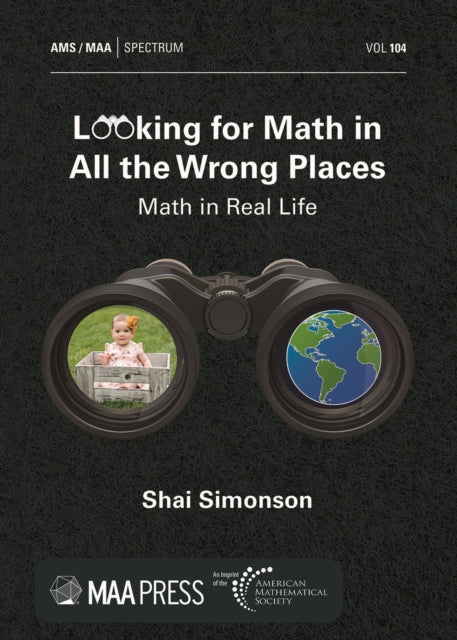
American Mathematical Society Looking for Math in All the Wrong Places: Math in Real Life
The soul of mathematics is the practice of skeptical inquiry: asking how and why things work, experimenting, exploring, and discovering. Estimation, analysis, computation, conjecture, and proof are the mathematical path to uncovering truth and we can use them in nearly every human pursuit. In this thoroughly charming and beguiling book, Shai Simonson applies mathematical tools in a variety of contexts that arise in everyday life to prove his claim that math is, literally, everywhere. Simonson applies his mathematical cast of mind to hiking, birthday parties, carnival games, lock picking, and kite flying. We see unexpected depths and connections when we look in the ""wrong"" places in the right way.No advanced mathematical knowledge is required to travel with Simonson and share in his investigations. All a reader needs is an open and curious mind, an eagerness to ask questions, and a willingness to think deeply and carefully about seemingly mundane things. There is wonder and joy in quotidian life with Simonson as your guide.
£33.08
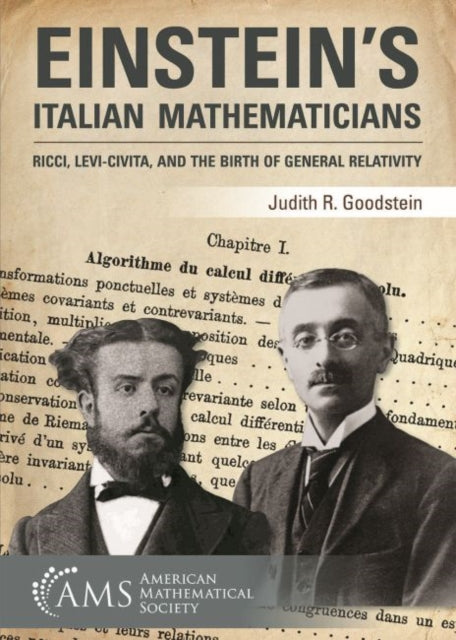
American Mathematical Society Einstein's Italian Mathematicians: Ricci, Levi-Civita, and the Birth of General Relativity
In the first decade of the twentieth century as Albert Einstein began formulating a revolutionary theory of gravity, the Italian mathematician Gregorio Ricci was entering the later stages of what appeared to be a productive if not particularly memorable career, devoted largely to what his colleagues regarded as the dogged development of a mathematical language he called the absolute differential calculus. In 1912, the work of these two dedicated scientists would intersect-and physics and mathematics would never be the same. Einstein's Italian Mathematicians chronicles the lives and intellectual contributions of Ricci and his brilliant student Tullio Levi-Civita, including letters, interviews, memoranda, and other personal and professional papers, to tell the remarkable, little-known story of how two Italian academicians, of widely divergent backgrounds and temperaments, came to provide the indispensable mathematical foundation-today known as the tensor calculus-for general relativity.
£35.75
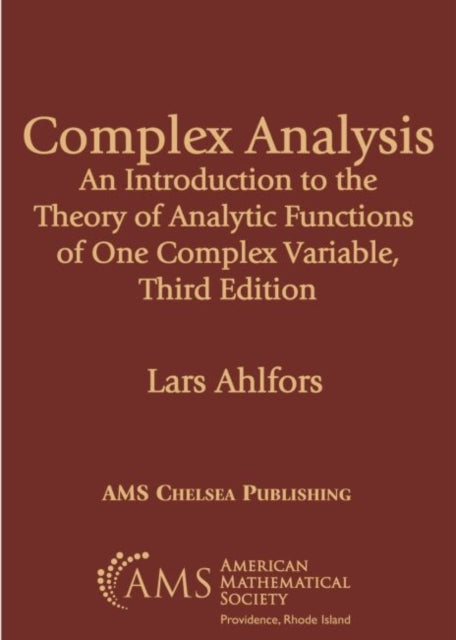
American Mathematical Society Complex Analysis: An Introduction to the Theory of Analytic Functions of One Complex Variable
This book is a reprint of the third edition of the classic book on complex analysis. It is a rigorous introduction on an elementary level to the theory of analytic functions of one complex variable and is intended to be used by first year graduate students and advanced undergraduate students.The book covers standard topics in an introductory complex analysis course. The presentation is slanted toward the geometric approach to complex analysis, with a lot of material on conformal mappings, the Riemann mapping theorem, Dirichlet's problem (the existence of a harmonic function with given boundary values), the monodromy theorem, and consideration of the kinds of regions that the Cauchy integral theorem holds for. It also covers such analytic topics as power series, contour integrals, and infinite products. The coverage of special functions is concise but reasonably complete. The presentation is concise, clear, and thorough, and is still fresh today, more than thirty years after its last revision.
£53.60
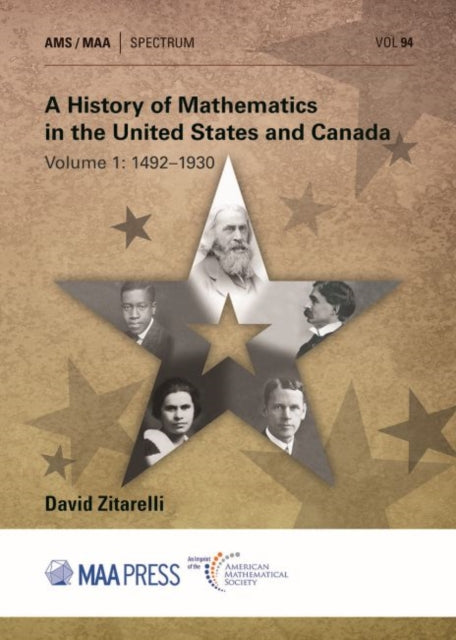
American Mathematical Society A History of Mathematics in the United States and Canada: Volume 1: 1492-1930
This is the first truly comprehensive and thorough history of the development of mathematics in the United States and Canada. This first volume of a two-volume work takes the reader from the European encounters with North America in the fifteenth century up to the emergence of the United States as a world leader in mathematics in the 1930s.In the story of the Colonial period particular emphasis is given to several prominent Colonial figures--Jefferson, Franklin, and Rittenhouse-and four important early colleges-Quebec, Harvard, Yale, and William & Mary. During the first three-quarters of the nineteenth century, mathematics in North America was largely the occupation of scattered individual pioneers: Bowditch, Farrar, Adrain, B. Peirce. This period is given a fuller treatment here than previously in the literature, including the creation of the first PhD programs and attempts to form organizations and found journals.With the founding of Johns Hopkins University in 1876, the American mathematical research community was finally, and firmly, founded. The programs at Hopkins, Chicago, and Clark are detailed as are the influence of major European mathematicians, including especially Klein, Hilbert, and Sylvester. Extensive histories of early areas of American emphasis are provided, including axiomatics, topology, and group theory. Also included are the early histories of statistics and cryptology in America, laying the foundation for the latter topic's role in abstract algebra in the 1950s. The stories of both the American Mathematical Society and the Mathematical Association of America are presented in detail.David Zitarelli is emeritus Professor of Mathematics at Temple University. A decorated and acclaimed teacher, scholar, and expositor, he is one of the world's leading experts on the development of American mathematics. Author or co-author of over a dozen books, this is his magnum opus--sure to become the leading reference on the topic and essential reading, not just for historians. In clear and compelling prose, Zitarelli spins a tale accessible to experts, generalists, and anyone interested in the history of science in North America.
£111.44
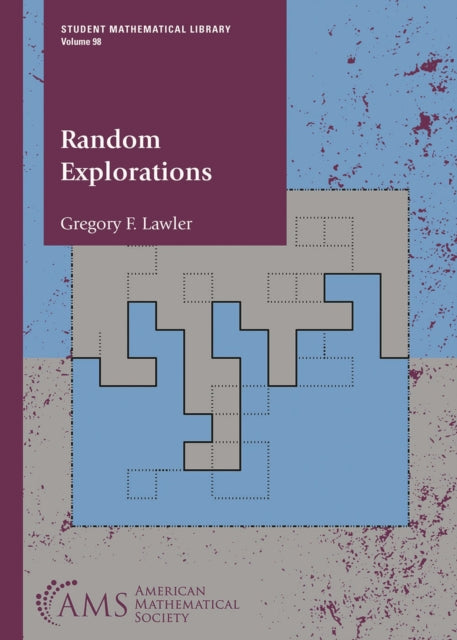
American Mathematical Society Random Explorations
The emphasis of this book is on discrete models, but the final chapter gives an introduction to the continuous objects: Brownian motion, Brownian loop measures and soups, Schramm-Loewner evolution, and the continuous Gaussian free field. A number of exercises scattered throughout the text will help gain a better understanding of the material.
£52.71
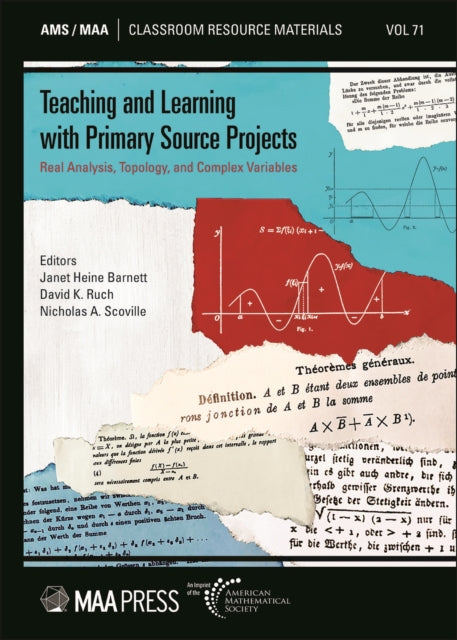
American Mathematical Society Teaching and Learning with Primary Source Projects
A collection of 24 classroom modules (PSPs) produced by TRIUMPHS that incorporate the reading of primary source excerpts to teach core mathematical topics. The selected excerpts are intertwined with thoughtfully designed student tasks that prompt students to actively engage with and explore the source material.
£57.18














































